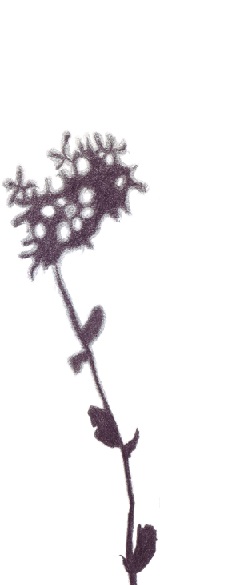
I go outside to draw, to encounter nature. I submit to it, let it speak as I listen and watch. It embraces me. Working in nature, I yield to its condition of which I am one, and it accomadates me. While drawing, I participate in its landscape.
Justice
I once said to someone that the trees—unlike people—do not complain if I wouldn’t draw them as they see themselves. When I later thought about it, I had to realize that this might not be true. In my works, I try to do right by the trees, the landscape, as if I owed it to them.
Language
As soon as I encounter nature, an ‘aesthetic event’ begins for me. My perception is exposed to all sorts of influences, which are not limited to sight. What becomes part of my drawings are things that I have seen, discovered, felt, walked upon, heard, thought about, smelt, experienced. I seek to transmit this event by way of drawing: When the spectator is confronted by my work, and I retreat, the event perdures on a different level, like it were to become a language. I see myself as a translator of certain experiences into the taking place of language-in-drawing, and I hope to be able to convey something of this auratic moment. Thus, each drawing is a renewed search for the appropriate way of reflecting upon landscape and the aesthetic event in such a manner that the spectator is equally involved and extending through it.
Means
The simplicity of the means plays an important role. I deliberately limit myself to paper and pencil, not because I want to translate complex perceptions into a representation of gray tonalities of landscape, but because I think that by keeping to specific means (specified tools, media, and technique) in the artwork process, an intrinsic dynamic gets provoked which is something I wish to explore and push further.
Alleged simplicity
After several quite complex projects, the idea to draw shadows came in handy. Indeed nothing seemed easier than placing a piece of paper on the ground and trace the shadow of plants: Grasses, flowers, and small trees … in a short while, and without much effort, I had acquired a few beautiful specimens. The involvement with this activity was soon to absorb me more and more. And in spite of the alleged simplicity, it became apparent that shadows were rather nervous phenomena, always shifting and changing, and hard to capture. Emerging clouds, the wind moving the plants, large trees nearby throwing additional shadows and of course the sun’s constant movement would turn any plant shadow into a rather lively being.
Objects of study
Then they turned into more and more fascinating an object of studies for me: I wanted to find plants more and more rare, to enrich my collection with drawings as diverse as possible. Sometimes the enticement was great to look up the names of all those different plants and to note them, and I had to resist the temptation to make some sort of herbarium out of it all, while I basically wanted to create the contrary of some sort of scientific work, and didn't want to be bound by any speculative usefulness. My attention should be dedicated only to the purely visual phenomena of the poetical moment of my encounter with the plant, without to bear any margin for further interpretation.
Myth and Aura
Inevitably, however, every drawing reminded me that I had encountered this plant at one time. To me it seemed that the shadow tracings created the plant anew by way of light and paper. I had the impression, to some extent, of making a return to the legendary origins of the art of drawing: According to Pline, the daughter of Butades was said to have drawn the shadow of her lover on the wall before his departure on a long journey. Thus to hold onto an evanescent moment—as a trace of the fact that a blissfull moment was once present, for fear not only that it would not soon return, but also for keeping proof of its past presence before any memory of it would eventually fade—lies at the heart of each tracing. That way, the magical aura of drawing itself became at once and once over fully present to me.
Memory and Eternity
This view of drawings as permanent fixation of ephemeral moments, that is, securing them from ongoing transitoriness, started to falter at some point however. Over time it became clear to me that my drawings would certainly not last forever, but rather that the sun would continue to shine, forever creating with its play of light shadows of the plants, therefore bringing them back to life again and again. The conflicting relationship between the drawing and the cause of its origination—the ambivalence therein, between memory and forgetting, permanence and transitoriness, are perhaps the most interesting objects of my investigations.